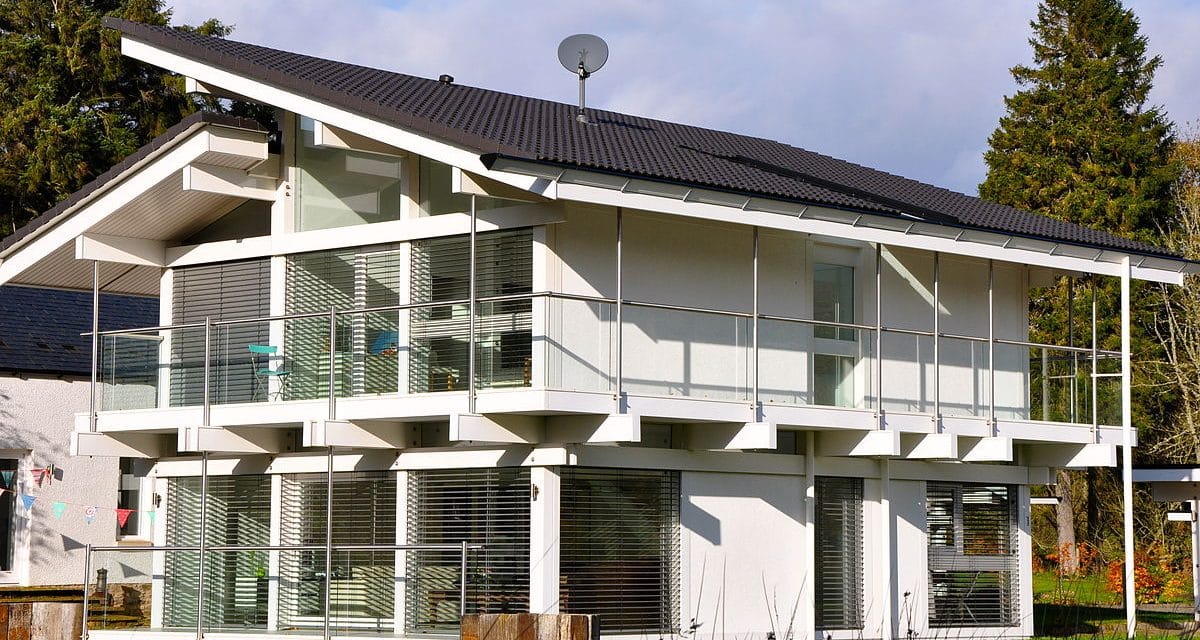There’s a reason why we have factories. A bunch of reasons, actually. Ask any automaker and they’ll rhyme off a few. Prebuilt homes, also called prefabricated, prefab or modular homes, are homes built primarily in a factory before being shipped to the site for final assembly. With the attention to detail and efficiency that comes from refining a work process over the years in the factory comes a number of environmental and economic benefits. Here are seven benefits of prefab homes.
#1 Less waste
One-quarter of all non-industrial waste in the U.S. is generated by the construction and demolition industry—an immense figure given the total amount of waste the country produces. As manufacturing processes are developed over time, prebuilt home builders develop greater efficiency in their production and can more accurately gauge how much material is required for a job, resulting in less waste. Since materials are stored in the factory it also means leftovers are more likely to be kept and reused. Materials are also less likely to get stolen, vandalized, or damaged, something that tends to happen on construction sites and less so in factories.
Prebuilt homes, however, do require more material in their construction than non-prebuilt homes because they have to be reinforced for delivery to the site. How much extra depends on how efficient the prebuilt home builder is, but generally falls in the 10 to 30 percent range. When looking at all the factors that cause loss of materials on a job site—theft, vandalism, water damage, rust or just tossed away—and taking into account that the extra materials used for reinforcement make the home more durable, it makes more sense for the extra materials to be attached to the home rather than lying around on a job site.
#2 Durable
As previously mentioned, the extra materials used to reinforce the house frame for shipment make the home more durable. Being built in a factory, prebuilt homes are also precision engineered, which contributes to their greater durability. The Federal Emergency Management Agency noted their durability in their 1993 report, “Building Performance: Hurricane Andrew in Florida,” “Overall, relatively minimal structural damage was noted in modular housing developments. The module-to-module combination of the units appears to have provided an inherently rigid system that performed much better than conventional residential framing.”
#3 Shorter construction time
Prebuilt homes can be constructed in less time. Rather than having to wait for deconstruction of previous buildings and laying of foundation before building, a prebuilt home can be made in the factory at the same time that those processes are happening. Since most of the building is done indoors weather delays are not an issue the way they are with stick-built homes.
According to the National Association of Home Builders, prebuilt homes can be built in an average of 5 months versus 6.9 months for site-built homes, though many builders claim they can be built considerably quicker—House in a Box states on their website that their homes can be constructed, shipped and assembled in less than 60 days.
#4 Better for the environment
Since prebuilt homes are constructed in one central place before being assembled on site, workers can settle close to the factory and commute a short distance rather than having to travel to a potentially distant site every day, resulting in less CO2 emissions. Prebuilt homes are also better for the environment because fewer materials are used in their construction and because they disturb the site less than conventional construction.
#5 Healthier
Since materials on construction sites are subjected to rain and snow, they can get covered in nasty environmental toxins like mold, mildew, and rust. Though materials can still get affected by these toxins indoors, they are less likely to get affected.
#6 Better for remote locations
For those living in remote regions, prebuilt homes are a good option because they are built in one central location then delivered, alleviating the difficulty in finding contractors willing to travel a long distance to build a home.
#7 Lower average permit value
Cost depends on a number of variables, so it’s difficult to say one type of home construction is cheaper than another. What prebuilt homes have going for them are the shorter construction time, reduced waste and savings from purchasing volume discounts on materials. They do cost extra in some regards, such as transportation for shipment of the components to the site and cost of the crane to install the home.
The National Association of Home Builders, states an “average permit value of $76.80 per square foot versus $94.34 for site-built.” Average permit value is a more useful figure than price according to Paul Emrath, NAHB vice president for survey and housing policy research. “It is necessary to base the cost comparison on permit value rather than price, because about 80 percent of modular homes are custom built on the owner’s lot and therefore record a sale price, unlike site-built homes that are often built speculatively for sale at some point in the future.”
This article originally appeared on Green Home Gnome. CC BY-SA 3.0
Featured image courtesy of Grap – Own work, CC BY-SA 3.0



